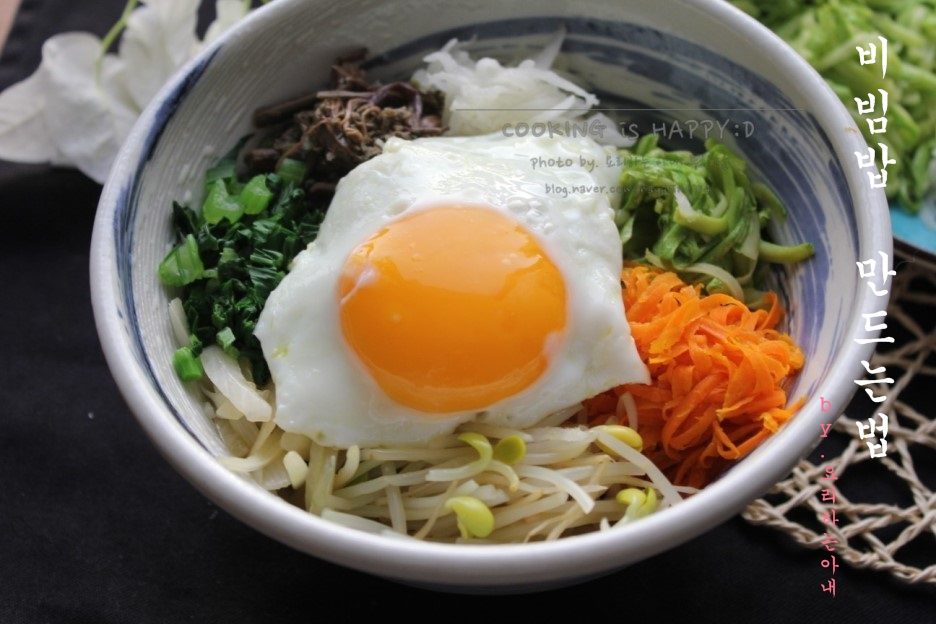Hearty Bulgogi Bibimbap Recipe
The Ultimate Nourishing Meal: Bulgogi Bibimbap Recipe with Various Vegetables

This Bulgogi Bibimbap is a truly nourishing meal, featuring a medley of fresh vegetables, savory bulgogi, and a perfectly balanced spicy-sweet gochujang sauce. When mixed together, it creates a symphony of flavors that is both satisfying and incredibly delicious. Enjoy this hearty and visually appealing dish made easily at home!
Basic Ingredients- Cooking oil, as needed
- Eggs, 4
- Toasted sesame seeds, 2 Tbsp
Bulgogi Marinade- Sugar, 2.5 Tbsp
- Soy sauce, 3 Tbsp
- Minced garlic, 1 Tbsp
- Black pepper, a pinch
- Sesame oil, 1 Tbsp
Spicy-Sweet Bibimbap Sauce- Gochujang (Korean chili paste), 4 Tbsp
- Water, 65ml
- Sugar, 1 Tbsp
- Sugar, 2.5 Tbsp
- Soy sauce, 3 Tbsp
- Minced garlic, 1 Tbsp
- Black pepper, a pinch
- Sesame oil, 1 Tbsp
Spicy-Sweet Bibimbap Sauce- Gochujang (Korean chili paste), 4 Tbsp
- Water, 65ml
- Sugar, 1 Tbsp
Cooking Instructions
Step 1
First, prepare 150g of thinly sliced beef for bulgogi. Heat a pan over medium-high heat, add 1 Tbsp of cooking oil, and begin to stir-fry the beef. Once the beef starts to change color, add 2.5 Tbsp of sugar and 3 Tbsp of soy sauce. Continue to stir-fry until the beef is coated and glistening with the sauce.

Step 2
Next, add 1 Tbsp of minced garlic and cook until fragrant. Stir well to combine the beef and the marinade, ensuring it’s fully cooked. Once the beef is done, reduce the heat to low. Finally, drizzle in 1 Tbsp of sesame oil for added aroma and flavor. Your delicious bulgogi is now ready.

Step 3
Now, let’s prepare the vibrant vegetables for the bibimbap. Start by washing and thinly julienning the carrots. Heat a bit of cooking oil in a pan over medium heat. Add the carrots and a tiny pinch of salt to season. Stir-fry until the carrots are slightly softened but still retain a pleasant crunch.

Step 4
Thinly slice the onion into julienne strips, similar in size to the carrots. Heat a little cooking oil in a pan and sauté the onions until they become translucent and slightly sweet. This process enhances the overall flavor of the bibimbap.

Step 5
Wash and thinly julienne the radish. Place the julienned radish in a pan with a small amount of cooking oil and a pinch of salt. Stir-fry until the radish is tender yet still has a refreshing crispness, adding a delightful texture to the dish.

Step 6
Use a mandoline or knife to cut the zucchini into thin, even julienne strips. Heat a little cooking oil in a pan and quickly stir-fry the zucchini. Be careful not to overcook; the zucchini should be tender but still hold its shape.

Step 7
For the fernbrake (gosari), you can use pre-prepared or rehydrated dried fernbrake. Heat a generous amount of sesame oil in a pan and stir-fry the fernbrake. Cook until it’s tender and infused with the nutty aroma of sesame oil. Once cooked, transfer to a plate and let it cool slightly. Its unique flavor profile greatly enhances the bibimbap.

Step 8
For an even more abundant and flavorful bibimbap, consider adding sautéed shiitake mushrooms or blanched spinach. Feel free to customize with your favorite vegetables.

Step 9
All the components are now ready! Fill a bowl with hot rice. Arrange the prepared bulgogi and colorful vegetables attractively over the rice. Top it all off with a perfectly fried sunny-side-up egg in the center for a visually appealing finish. To make the bibimbap sauce, combine 4 Tbsp gochujang, 65ml water, and 1 Tbsp sugar in a small bowl and mix well. Pour the sauce over the bibimbap, and mix everything together thoroughly before enjoying!




